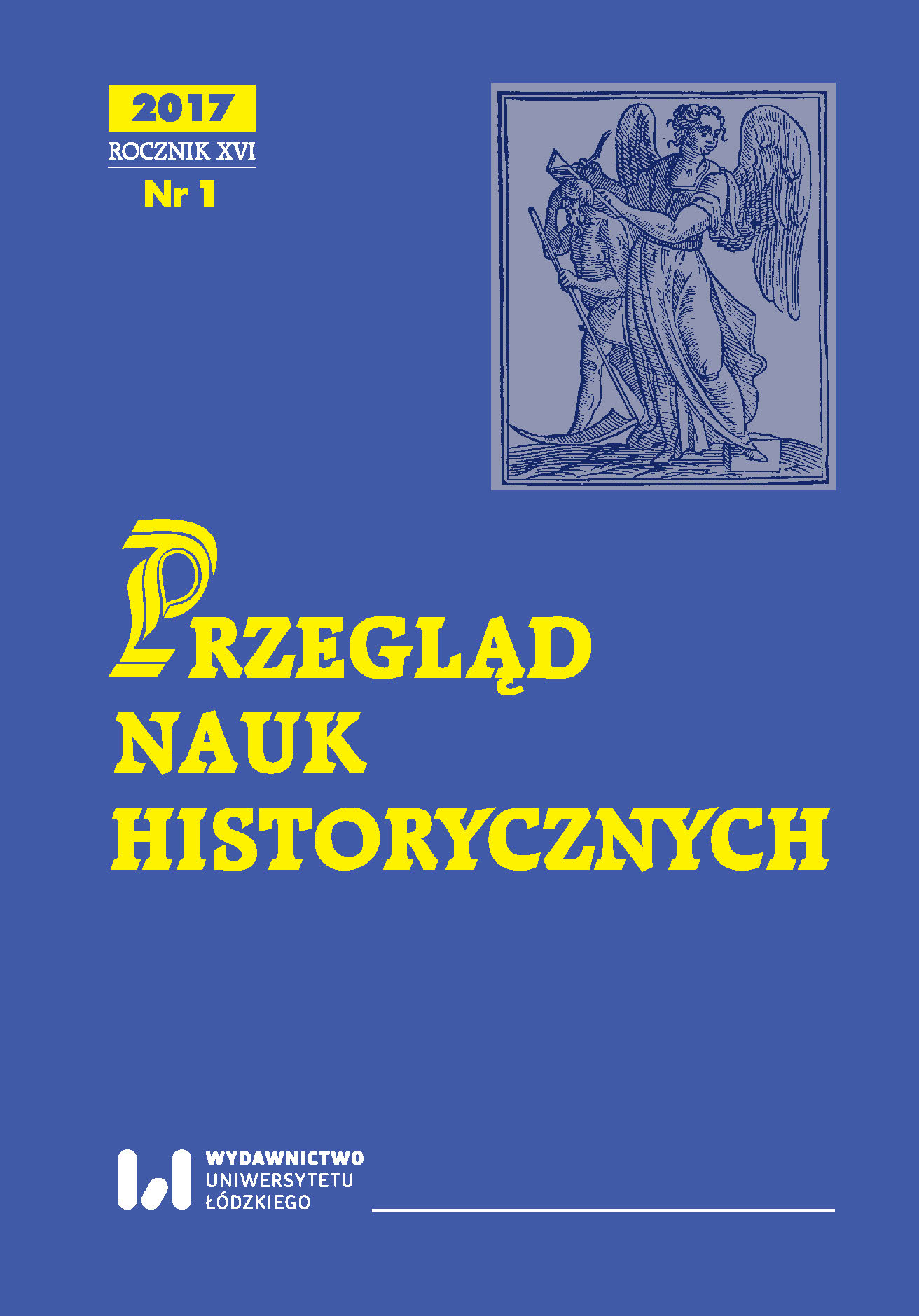Ekspozytury i wpływy Związku Młodzieży Polskiej „Zet” w okresie zaborów (1886–1914)
Agencies and influence of the Associaton of the Polish Youth „Zet” (Związek Młodzieży Polskiej „Zet”) during the period of the Partitions of Poland (1886–1914)
Author(s): Przemysław WaingertnerSubject(s): History, Cultural history, Social history, 19th Century, Pre-WW I & WW I (1900 -1919)
Published by: Wydawnictwo Uniwersytetu Łódzkiego
Keywords: history of Poland 19th–20th century; social and political movements on the Polish lands; Association of the Polish Youth „Zet”,
Summary/Abstract: In 1886, at the University of Warsaw was established a secret Association of thePolish Youth „Zet” (APY). In the three decades it has become well organised and operating structure, with its outposts in the academic centres, where they studied the Poles – in Polish lands all three partitions, in Russia and in Western Europe. The program of APY called for young people to fight for an independent,united, democratic, self-governing, socially equitable and tolerant republic. The members of APY, in order to affect young Poles, ran on an activity involving the creation and inspiration of the academic unions and the associations of students, youth workers and peasants. They try to penetrate the existing structure of the„adult” society. Among these organizations were: „Red Rose”, „X”, „Pet”, National Groups, the National Youth Organization, „Eleuzis”, Union of Polish Societiesin Germany „Unitas”, the Union of Societies of the Polish Youth Abroad, Unionof Youth Craft, National Union of Workers, the National Union of Peasants, People Education League, National Education Association and the team Bartosz’s Troops. They expanded the influence of APY. / W 1886 r. na Uniwersytecie Warszawskim powstał tajny Związek Młodzieży Polskiej „Zet” (ZMP). W ciągu trzech dekad stał się on sprawnie zorganizowaną i działającą strukturą, mającą swoje placówki w ośrodkach akademickich, w których studiowali Polacy – na ziemiach polskich wszystkich trzech zaborów, w Rosji oraz w Europie Zachodniej. Program Związku wzywał młodzież do walki o niepodległą, zjednoczoną, demokratyczną, samorządną, sprawiedliwą społecznie oraz tolerancyjną Rzeczpospolitą. Członkowie ZMP, dążąc do wpływu na młodych Polaków, prowadzili działalność polegającą na zakładaniu i inspirowaniu związków akademickich, uczniowskich, młodzieży robotniczej i chłopskiej. Starali się również penetrować już istniejące struktury „dorosłego” społeczeństwa. Do grona tych organizacji należały: „Czerwona Róża”, „X”, „Pet”, Towarzystwa Tomasza Zana, Grupy Narodowe, Organizacja Młodzieży Narodowej, „Eleuzis”, Związek Towarzystw Polskich w Niemczech „Unitas”, Zjednoczenie Towarzystw Młodzieży Polskiej Zagranicą, Związek Młodzieży Rzemieślniczej, Narodowy Związek Robotniczy, Narodowy Związek Chłopski, Liga Oświaty Ludowej, Towarzystwo Oświaty Narodowej i Drużyny Bartoszowe. Poszerzały one wpływy ZMP.
Journal: Przegląd Nauk Historycznych
- Issue Year: 16/2017
- Issue No: 1
- Page Range: 137-165
- Page Count: 29
- Language: Polish

